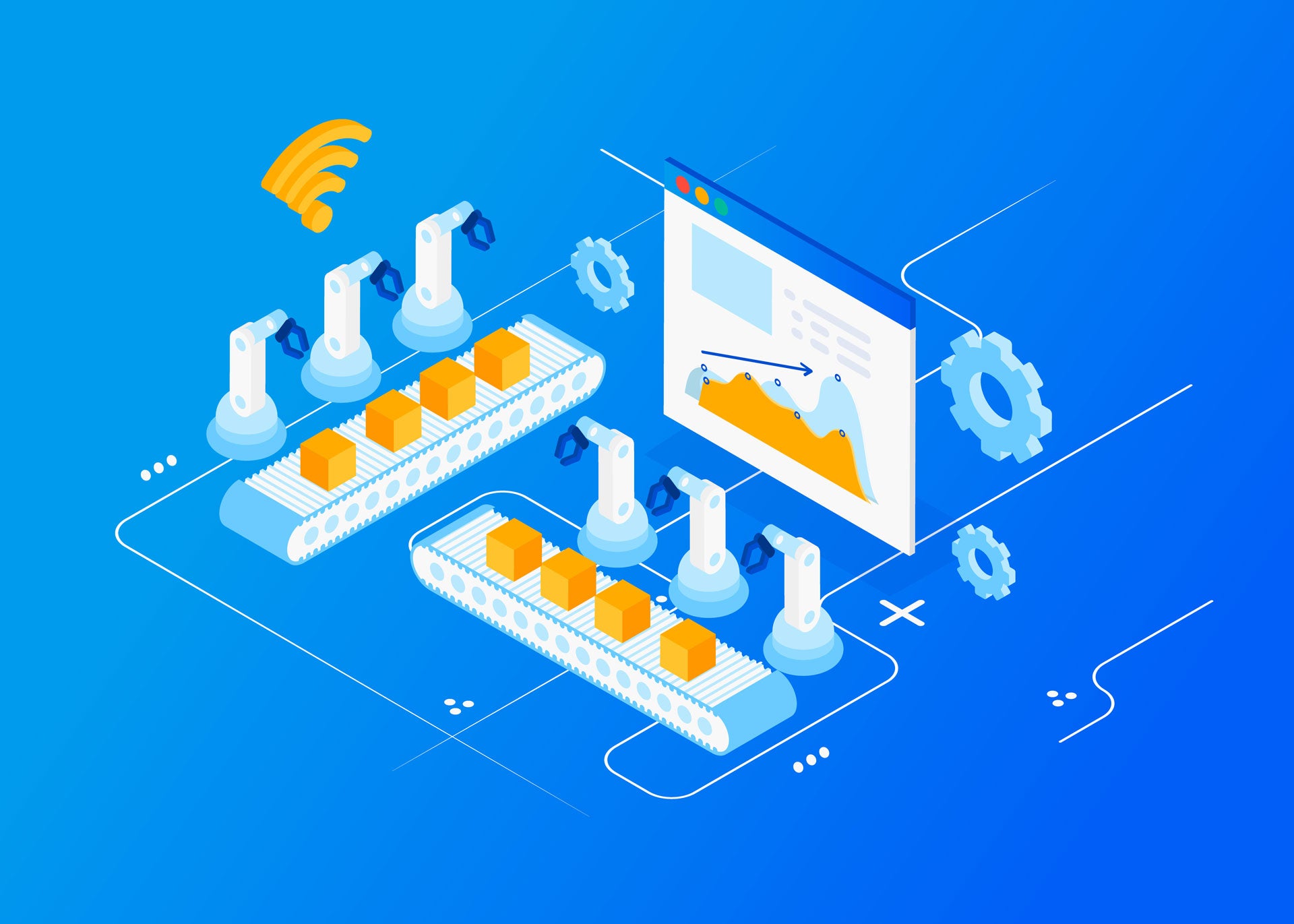
In the future, the success factors that will separate winners from losers in an increasingly competitive manufacturing landscape will extend far beyond the ability to manufacture products.
In its recent ‘Exponential technologies in manufacturing’ study, Deloitte observes that organisations from every industry now face mounting pressure to transform and make the shift from product-centric business models to capture other sources of value—and the manufacturing sector is not immune to this challenge.
However, interviews conducted by Deloitte with manufacturing executives highlight a worrying trend. Many interviewees expressed concern that their organisations are not preparing or moving fast enough to address future disruptions on the horizon.
Prioritising the areas in which digitalisation will deliver the most benefits is just part of the challenge. Many manufacturers are locked in a world of legacy IT that is hampering efforts to adopt Industry 4.0 operational innovations and become digital manufacturing enterprises (DMEs) as quickly or holistically as needed.
Enabling digital transformation capabilities
Overcoming the barriers to digitalisation that exist within an enterprise’s own IT infrastructures represents a first vital step on the journey to digital transformation.
Indeed, having the necessary IT services in place that are both available and easy to rapidly scale is a key prerequisite for digitalisation – which that means enterprise cloud strategies will need to be adopted to support these requirements. After which, the advantages of ‘disruptive’ technologies can be fully utilised to enable future sustainable growth and enhanced market relevance.
Furthermore, transitioning to a cloud-environment also makes it easier to deliver demand-oriented access to innovative applications at any time, whether for pilot projects or standard processes.
Creating the prerequisites for intelligent systems
The second requirement for businesses looking to become a DME is the ability to capture data from all internal and external processes, contextualise it, and use it for decision-making and forecasts. Central systems for enterprise management typically enterprise resource planning (ERP) systems in the manufacturing industry – must therefore be integrated across all relevant business areas, as well as external applications.
As well as creating the basis for intelligent systems, this will also enable the initiation of vertical networks – cascading from production to corporate management – and the design of digitalised, horizontal ecosystems with partners, suppliers and customers. According to KPMG’s Global Manufacturing Outlook, this latter capability will be decisive for enabling maximum supply chain transparency and growth.
Modern ERP systems are geared to delivering all this and more. Today’s systems are available flexibly in the cloud, or as an on-premises solution, and designed to support the individual cloud strategies of enterprises striving for a digitally connected future.
With the appropriate infrastructure in place, manufacturers can then deploy the modern software architectures and flexible interfaces that make it easier to test and implement Industry 4.0 technology innovations.
Industry 4.0 and digital twinning
One such innovation is digital twinning—groundbreaking Industry 4.0 technology that represents an important innovation for the manufacturing industry. It will enable engineers to create virtual product prototypes and maintain virtual representations of these products, making necessary amendments to optimise its business performance.
In the future, digital twins will be created in a wide range of contexts to serve a variety of objectives that will include driving leaner, and more productive, operations. As PwC explains in its report Digital Factories 2020, digital twinning is not only valuable for product development. Digital twins could be utilised to simulate an asset’s operations – through the creation of digital simulations of facilities and environments that emulate real-life conditions – to enable enhanced predictive maintenance.
As manufacturing processes become increasingly digital, and smart connected technologies become more pervasive thanks to the Internet of Things (IoT), interactivity between the physical and digital worlds is set to grow. Indeed, a recent Research and Markets report predicts that, by 2022, around 85% of all IoT enabled platforms will have digital twin functionality.
Blockchain in the supply chain
The growing trend towards digitally networked supplier ecosystems means the demand for maximum transparency and security across the supply chain is gaining momentum. With companies coming under increasing scrutiny, and customer confidence a top priority, the ability to facilitate tamper-proof transactions and services is becoming increasingly important.
Blockchain is a data structure that makes it possible to create a digital ledger of transactions. This uses cryptography to manage secure access to the enterprise blockchain ledger, and once a block of data is recorded on the ledger, it is extremely difficult to change or remove.
Implementing blockchain technology can revolutionise the supply chain, delivering the transparency, scalability, and enhanced security that makes it easier and safer for businesses to work together over the internet. When connected to an ERP system, this technology can also provide executives with real-time, robust data.
MIT is currently developing a peer-to-peer platform that organisations can use as a blueprint for initiating highly secure blockchain applications.
Artificial intelligence for robotics and planning
Similarly, artificial intelligence (AI) is set to transform manufacturing—enabling the development of AI-powered robots that can undertake automated issue identification. Machine learning will enable us to test and learn from each iteration what works, and what doesn’t to improve production efficiencies.
Large manufacturing companies have already begun using AI to empower enhanced material purchasing and allocation decisions, or to more accurately predict delivery times and volumes—based on capacity, and planned, and unplanned, downtime. Others are exploring how predictive analytics and AI could enable them to reinvent capacity planning and achieve a more predictable performance.
The emergence of new human-machine interfaces
Finally, as the IoT grows, human-machine interfaces (HMIs) are becoming increasingly sophisticated. Technologies like augmented reality glasses and voice recognition offer the promise of transforming production throughput and quality, by enabling workers of all skill levels to efficiently complete complex tasks with minimal formal training.
Providers such as Vuzix and Google Glass Enterprise Edition provide wearable devices that give users quick access to information, such as notifications or navigation instructions. These can increase the efficiency of technicians, engineers, and other employees working on the production line or undertaking maintenance in the field. Applications range from the provision of step-by-step instructions, guidance on selecting the right tools, or the photographing, recording, and reporting of quality issues.
Voice-driven technologies are set to have a major impact on industrial landscape too. Indeed, a recent study undertaken by Zebra reveals that 51% of manufacturing companies are planning to expand their use of voice technology in the next five years. These implementations will encompass far more than simply eliminating the need for workers to juggle equipment in one hand while making inputs on a mobile device with the other, or improving communication between employees in production facilities.
When linked with an extensive ERP system that oversees all operations on a factory floor, voice-driven technologies can also help to improve decision-making. The moment a command is issued, a smart ERP system can sync these with a manufacturer’s internal systems to collect invaluable insights over how these are being actioned across the factory floor. Delivering this data in real-time makes it possible to pinpoint where operation inefficiencies lie and focus efforts on closing these gaps to increase output.
Connecting everything together
The Industry 4.0 revolution encompasses a broader digital transformation that spans processes, functions, and technologies. Transforming how manufacturers make decisions that impact operations, deliver value, and improve performance.
Manufacturers need to prepare a pathway toward digital maturity in readiness for the adoption of advanced technologies, and the enablement of real-time access to data and intelligence across the enterprise and beyond. From digital supply networks to AI, the ability to integrate advanced new technologies with existing IT infrastructures will enable ERP to connect everything together and leverage cloud computing, the internet, cognitive computing, and robotics, to apply live data insights to production and on-demand consumption models.







